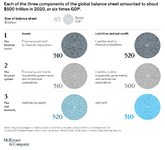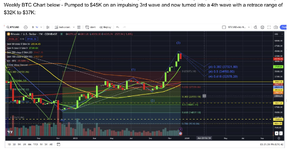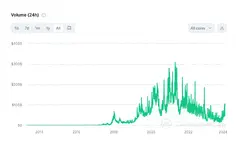Stacks is an L2 for Bitcoin, which will be going live with a 1:1 peg of Bitcoin (sBTC) soon. It had a low of about $0.20 this year. A high of $1.18 and is currently about $1.03. It hit a high of $2.78 in 2021. I would look at buying some in pull-backs next year.
You can stake Stacks and earn about 9% pa in BTC, in a wallet or pool -
https://pool.xverse.app/
From the project team:
A summary of the sBTC white paper, a plan to unlock hundreds of billions of dollars of latent capital.
What if Bitcoin could be more than a store of value?
What if the hundreds of billions of dollars worth of passive BTC were put to use?
What if we could create a robust decentralized finance ecosystem on Bitcoin (similar to that of Ethereum)?
The opportunity is tremendous and has been a dream for over a decade.
sBTC aims to make this dream a reality.
sBTC in a sentence
“sBTC is a 1:1 Bitcoin-backed asset on the Stacks Bitcoin L2 that will allow developers to leverage the security, network effects, and .5T in latent capital of the Bitcoin network.” - sBTC․tech
The white paper breaks down each part of this definition.
A 1:1 Bitcoin-backed asset
A 1:1 Bitcoin-backed asset is an asset that is distinct from Bitcoin but “represents” Bitcoin — it's an asset that is derived from Bitcoin. This new asset (sBTC in our case) adds functionality to Bitcoin while maintaining important monetary features of Bitcoin.
1:1 Bitcoin-backed assets, like wBTC (wrapped Bitcoin on Ethereum), already exist in the market. However, they are not perfect and require significant tradeoffs.
In Bitcoin-backed asset designs like wBTC, the backed Bitcoin is entrusted with a single custodian (or a federation of custodians). Entrusting the backed asset with a single custodian is risky. And with a risky foundation, building applications on these layers is not as attractive.
sBTC is a new way to create a Bitcoin-backed asset that is linked or “pegged” to Bitcoin in a decentralized way. This enables builders to build stablecoins, NFTs, DeFi, and more with Bitcoin as the bedrock foundation.
Bitcoin layers are essential
given the speed (or lack thereof) and simplicity of Bitcoin at the base layer, we must build additional layers on top of Bitcoin. These additional layers will give Bitcoin added functionality (like smart contracts) and make decentralized finance possible on Bitcoin.
According to the white paper, a viable Bitcoin layer must have the following properties:
1. Smart contracts
2. The ability to transfer BTC in and out of the layer and to “write” to Bitcoin
3. The security of Bitcoin
The current Bitcoin layer solutions (Lightning, @Liquid_BTC, @rootstock_io) do not have all of these capabilities, which limits their potential.
sBTC (along with Stacks) aims to build the ideal Bitcoin layer with all three qualities. Its success will unlock the true potential of Bitcoin and enable developers to build applications on Bitcoin, similar to the applications that we've seen in other ecosystems.
There's an opportunity and need for sBTC.
So, how does it work?
sBTC is a decentralized two-way Bitcoin peg
sBTC uses the @Stacks Bitcoin layer to create a decentralized two-way Bitcoin peg. First, let's cover how the “two-way” part works. It’s pretty simple:
1. BTC is locked on the Bitcoin Layer 1 and an equal amount of the derivative asset, sBTC, is issued on the Stacks layer.
2. This new derivative asset, sBTC, can be used for smart contracts.
3. Then, when ready, sBTC can be converted back into Bitcoin, and the sBTC is destroyed.
This two-way Bitcoin peg design is technically feasible and has already been implemented, as proven by wBTC on Ethereum, R-BTC on RSK, and L-BTC on Liquid. The problem with these pegs, however, is the decentralization.
The pegs are managed by a centralized custodian or a group of trusted entities. And if the past decade of crypto disasters has taught us anything, it’s that it is dangerous to trust a centralized entity to hold your money.
So, while wBTC and R-BTC are important projects that have gained traction and proven the demand for sBTC, you can understand why developers are relatively cautious about building on these layers.
Solving the “holy grail” problem: sBTC creates a decentralized peg
Stacks makes a decentralized peg possible. Stacks is a Bitcoin layer that went live on main net in early 2021. The Stacks layer uses Proof of Transfer (PoX) to economically align incentives and maintain the 1:1 Bitcoin-backed peg.
1. In PoX, Stackers (or participants who lock assets in the Stacks network) are paid in BTC for completing the task of threshold signing the peg-out transactions (more on thresholds later).
a) These Stackers have the clear monetary gain of BTC payment, so they will complete the peg-out requests (in other words, they’ll sign the peg-out transactions).
b). The Stacks protocol is critical to the functionality of being paid and incentivized with BTC.
2. Stacks miners spend BTC to mine Stacks blocks, and this BTC is then redistributed to the Stackers as their reward.
3. This PoX design ensures that the most profitable course of action for a Stacker is to maintain the peg.
This decentralized peg design is building on top of the existing progress of Stacks. In addition, this peg design gains some additional benefits:
- There are no “wrapping fees” when pegging their BTC — Stackers are rewarded by the core Stacks consensus protocol. So, the peg-in/out functionality remains free to users.
- There is no fork risk. Since the Stacks layer mirrors the Bitcoin layer, any Bitcoin fork would be reflected on the Stacks layer.
This sBTC design unlocks billions of dollars in latent capital. sBTC will make it possible to create decentralized BTC lending, BTC-backed stablecoins, and other apps. Without introducing a trusted centralized party, builders can be confident building with sBTC.
Other 1:1 Bitcoin-backed assets rely on a federation of trusted entities. They can be considered decentralized, but in reality, there is a risk as the federation model relies on trusted third parties.
sBTC goes further than the federated model to bring a truly decentralized Bitcoin peg. sBTC:
1. Allows an open membership where anyone can join the system and become a signer for peg-out transactions.
2. Requires peg-out signers to lock more collateral than the value of BTC pegged-in. So, they are economically incentivized to process peg-out requests (so they can get their BTC back).
Unlike other Bitcoin pegs, sBTC can only be minted by depositing an equivalent BTC in a script on the Bitcoin main chain. This script on the Bitcoin main chain is maintained by an open-membership group. It's an open system and anyone can monitor the 1:1 BTC to sBTC ratio. Other models rely on less transparent models.
Finally, as noted above, Stackers are economically incentivized (paid in BTC) to complete the task of threshold signing the peg-out transactions. This ensures the 1:1 ratio is maintained.
Therefore, sBTC can maintain a 1:1 BTC to sBTC ratio transparently, without relying on a custodian.




